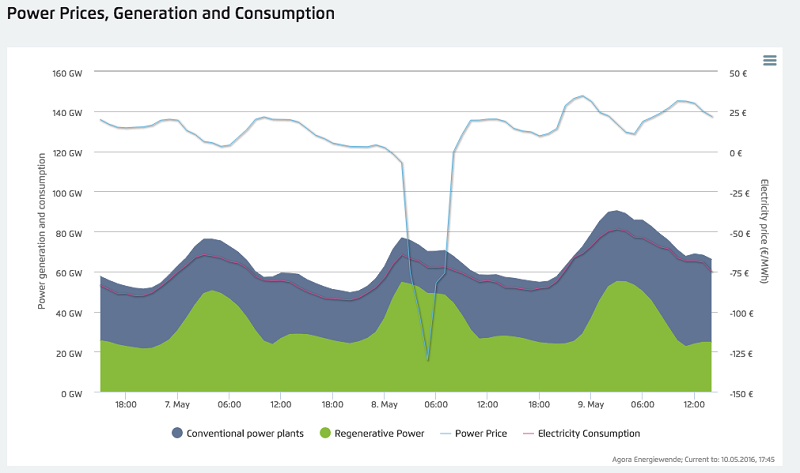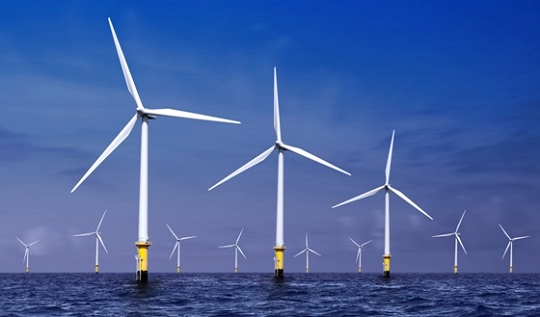For a brief period on Sunday, May 8, everything was perfect in Germany. You see, thanks to a perfectly sunny and windy day, at around 1pm, the country’s solar, wind, hydro, and biomass plants were supplying about 55GW of the 63GW being consumed —a clip of about 87%.

The result was power prices tanking into the negative fields for a couple of hours — meaning commercial customers were being paid to use the country’s electricity.

“We have a greater share of renewable energy every year,” said Christoph Podewils of Agora. “The power system adapted to this quite nicely. This day shows again that a system with large amounts of renewable energy works fine.”
According to German clean energy think tank Agora Energiewende, the country’s renewable mix was averaged out at about 33% last year. New wind power being added this year is expected to push that rate even higher.

Germany’s goal is to hit 100% renewable energy by 2050. Nearby Denmark might be able to help the country hit that mark sooner rather than later – already its wind turbines produce more electricity than the Danes consume, and so the country exports surplus power to Germany, Norway, and Sweden.

Worth noting — the few hours on Sunday weren’t good for everyone. The current system is still too rigid for power suppliers and consumers to respond quickly to price signals. While gas power plants were taken off line, coal and nuclear plants take a bit longer to shut down. The result was there continuing to run during this brief period, which resulted in their having to pay to sell power into the grid for a few hours. Their industrial counterparts, like refineries and foundries, were able to respond a bit more quickly, and earned money by consuming the electricity produced.
Via QZ
Advertisement
Learn more about Electronic Products Magazine





